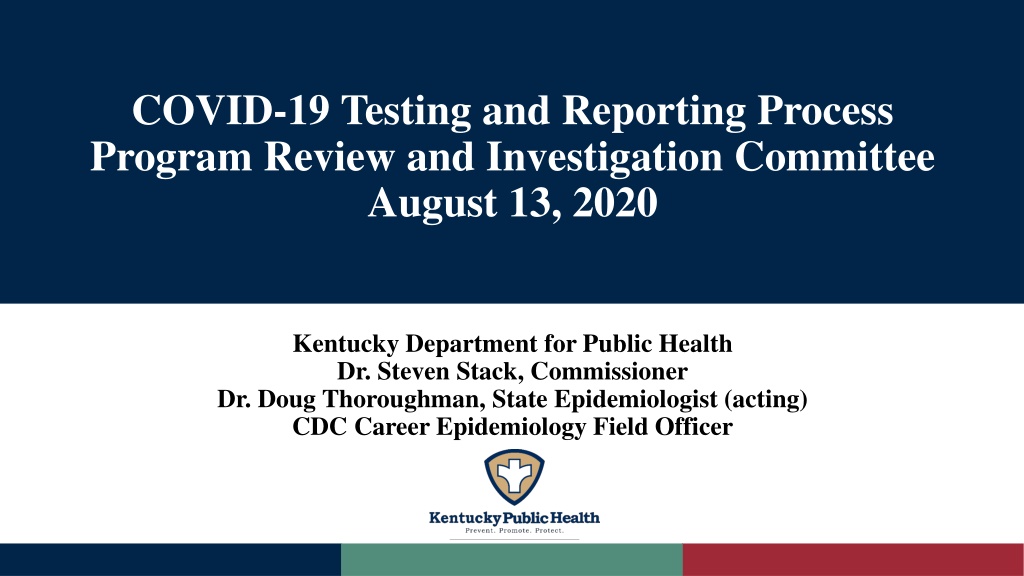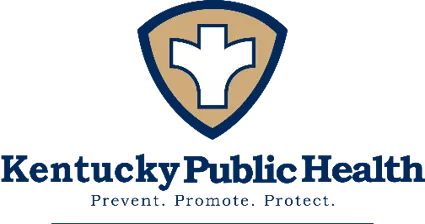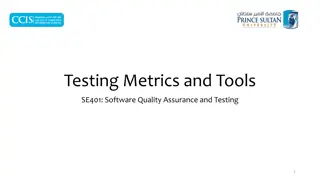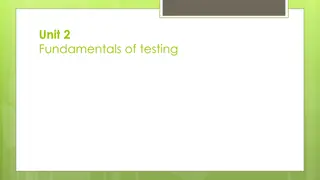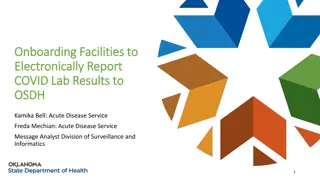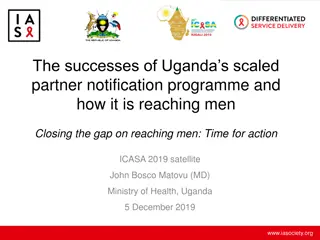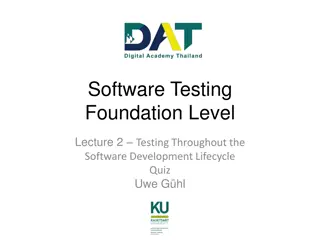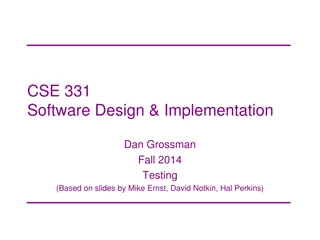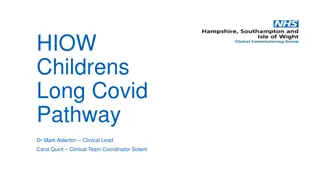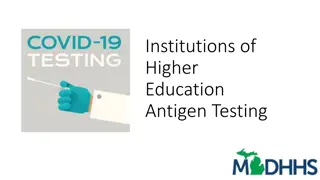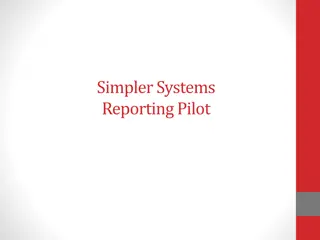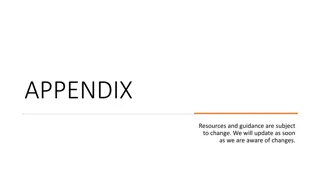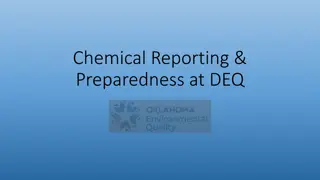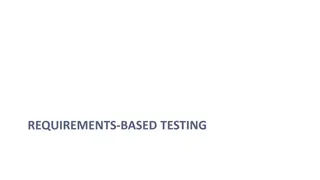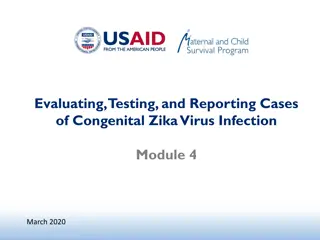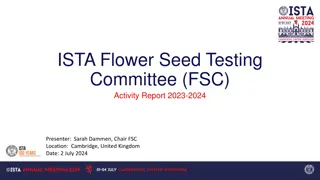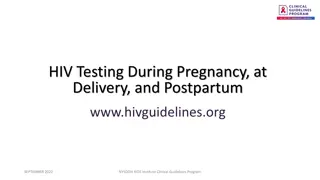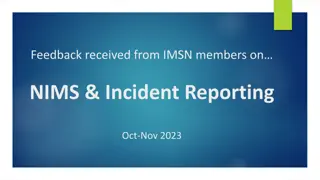COVID-19 Testing and Reporting Process Review Committee
In August 2020, the Kentucky Department for Public Health conducted a review of the COVID-19 testing and reporting process. The committee, led by Dr. Steven Stack and Dr. Doug Thoroughman, analyzed data on cases, mortality rates, and public health laws related to the pandemic. The report highlights the state of emergency declaration, new cases by week, and key public health laws concerning infectious diseases. The document emphasizes the importance of timely reporting and surveillance in combating the spread of COVID-19.
Download Presentation

Please find below an Image/Link to download the presentation.
The content on the website is provided AS IS for your information and personal use only. It may not be sold, licensed, or shared on other websites without obtaining consent from the author.If you encounter any issues during the download, it is possible that the publisher has removed the file from their server.
You are allowed to download the files provided on this website for personal or commercial use, subject to the condition that they are used lawfully. All files are the property of their respective owners.
The content on the website is provided AS IS for your information and personal use only. It may not be sold, licensed, or shared on other websites without obtaining consent from the author.
E N D
Presentation Transcript
COVID-19 Testing and Reporting Process Program Review and Investigation Committee August 13, 2020 Kentucky Department for Public Health Dr. Steven Stack, Commissioner Dr. Doug Thoroughman, State Epidemiologist (acting) CDC Career Epidemiology Field Officer
KENTUCKY1 UNITED STATES2 Risk to Americans is widespread WORLD3 State of Emergency declared March 6, 2020 WHO declared pandemic on March 11, 2020 34,982 Cases( 404) 4,974,959 Cases ( 54,590) 19,462,112 Cases ( 273,552) 773 161,284 Deaths( 1,064) 722,285 Deaths ( 6,207) Deaths ( 1) 2.2% Mortality Rate 3.3% Mortality Rate 3.7% Mortality Rate 120 counties with at least one case 59 states + territories with at least one case 215 countries with at least one case 1Kentucky Department for PublicHealth 2The Centers for Disease Control and Preventionhttps://www.cdc.gov/coronavirus/2019-ncov/cases-in-us.html 3The World Health Organization https://www.who.int/emergencies/diseases/novel-coronavirus-2019/situation-reports/ 3
Kentucky COVID-19 New Cases by Week (n = 34,982) 377239184106 3797 Number of Cases 2482 14821675 1523 1446 1222 11731221 1121 1008 99711141056 914 516 335 84 16 4 Date Cases Announced Last Updated August 10, 2020 4
Public Health Laws in Relation to COVID-19 5
902 KAR 2:020 Reportable Disease Surveillance Public health s primary operating law Requires CHFS to implement a statewide program for the detection, prevention, and control of communicable diseases, etc. including: Notification standards Submission of specimens Reporting classifications and methods Which infectious conditions are reportable Section 10 specifies that Newly recognized agents and Emerging Pathogens are immediately reportable Also specifies that any outbreak, epidemic are immediately reportable 10 (2)(b) An outbreak of a disease or condition that resulted in multiple hospitalizations or death 10 (2)(d) An epidemic 6
902 KAR 2:020 Notification Standards Section 2 Specifies who must report Health Professionals AND facilities/laboratories must report cases of reportable disease to local and/or state health departments Section 5 Specifies time frames for reporting Immediate Bioterrorism, select agent testing, outbreaks, epidemics, emerging pathogens COVID-19 Falls in this category on several levels Urgent Within 24 hours (list of conditions in Section 6) Priority Within 1 business day (list of conditions in Section 7, 11, 12(3), 17(4), or 18) Routine Within 5 business days (list of conditions in Section 8, 9, 10, 13(1), 16(1), 17(7), or 20(1)) Section 5 Also specifies how reporting is done Electronic or fax submission EPID 200 Reportable Disease Form For COVID-19 KDPH also requires a CDC COVID-19 Case Investigation Form 7
COVID-19 Laboratory Testing and Test Reporting 8
COVID-19 Laboratory Testing Types of Tests Virus detection Nasopharyngeal (NP), Oropharyngeal (OP), Nasal swabs PCR Detects genetic material of the COVID-19 virus Antigen Detects proteins specifically associated with the virus More likely to indicate active infection Dependent on other characteristics like symptom timeframe, exposure to confirmed cases Serology blood tests Antibody testing Detects body s response to pathogen, development of antibodies Less likely to indicate current infection, but infection at some point in the past Symptomology could indicate more recent infection 9
COVID-19 Laboratory Reporting 1st Priority: Report results to the clinician or facility ordering the test 2nd Priority: Report results to Public Health Preferred Method Kentucky Health Information Exchange (KHIE) Facilities must be onboarded to KHIE for this to occur Many pop-up labs offer testing for COVID-19 that have never tested for reportable diseases Not connected to KHIE Many not even aware that they need to report to Public Health New, point-of-care/rapid tests add another layer of complexity There is no lab , just the facility offering testing pharmacies, doctor s offices, other groups Secondary Methods Report directly to NEDSS (National Electronic Disease Surveillance System) Fax Electronic file (spreadsheet) submission 10
Reporting of Positives vs. ALL Test Results Reporting of positive results required by law (902 KAR 2:020) Reporting of negative results not required by law Need negative results to determine positivity rate of testing Labs reporting through KHIE submit ALL test results Labs reporting to NEDSS directly submit ALL test results But not easy to extract and combine data with KHIE data Commissioner has mandated all labs to get onboarded to KHIE In the interim, labs can report full results via spreadsheets submitted to KDPH Again, not easy to combine data with KHIE or NEDSS (manpower issue) Many labs don t submit regular or full data They know it isn t required by law! 11
Laboratories Testing Kentucky Residents AIT Genetworx Pride Diagnostic Appalachian Regional Hospital GeneTrait Labs (PTC) Quest Baptist Health Corbin Gravity Diagnostics Solaris Baptist Health Lexington Integrity X-Gene (Colt Neck Labs/Tec Biosciences) Baptist Health Richmond KY State Lab (DLS) U of L Research Laboratory Biocerna LabCorp U of L Infectious Disease Laboratory BioTapMedical (Baptist Louisville-Norton Healthcare) LabTox University of Kentucky Bluewater Diagnostics (Bluewater Toxicology) Lexar VA Lexington Micro Biology (LEXINGTON VA HEALTH CARE) Center for Predictive Medicine Louisville Metro Public Health Lab VA Medical Center Lexington (Special Reference Laboratory Lexington VAMC) Clarity Lab Solutions Mako Genomics Deaconess Hospital Mayo Clinic VA Medical Center Louisville (Robley Rex) Diatherix Nulease Medical Solutions Vault Medical Services Dominion Diagnostics Onsite Health Solutions VIKOR Scientific eTrueNorth Labs (Walmart Drive Thru) Reditus Laboratories Owensboro Health Regional Hospital Viracor Eurofins PathGroup Walgreens--- PWN Health eTrueNorth Labs (HealthQuest Labs) Pathology and Cytology Labs Fulgent Premier Medical 12
Lab Testing Surveillance Need to collect data on testing being performed on KY residents Lab survey initiated April 3, 2020 National Guard contingent assigned to KDPH created survey Contacted labs to begin reporting Survey collects data from labs we know are testing residents of Kentucky Cumulative and daily numbers Total number of tests performed Total number of positive tests Broken down by PCR, Antigen and Antibody Reporting is irregular by lab, so we use cumulative reporting to look at positivity rates 13
Specific Testing Questions All PCR, antigen, and antibody results are reportable to KDPH Not all are counted and reported as cases No financial incentive to report positive tests for facilities or clinicians Not aware of anyone manipulating results for financial gain We have heard of unscrupulous testing operations, however Quality Assurance for Labs: The duty of FDA, not KDPH State Lab has assisted in validating a few laboratories Laboratories that have false results If we hear about these, KDPH investigates, Commissioner often intervenes State Lab has been available to validate results from labs in this situation We don t have a clear mechanism to exclude results from labs unless it is proven that their results are 100% false 14
Confusion in Test Results Timing of testing matters during course of infection PCR/Antigen will detect presence of virus If too early, may not detect due to insufficient viral load Body will shed virus for weeks, so likely positive well after infectiousness Antibodies for COVID-19 show up late, usually late in 2nd week of infection Presence of antibodies indicate you have been infected but not when Sensitivity and specificity of test matter Most genetic (PCR/antigen) tests are pretty good Each test differs and there are dozens Adequacy of specimen Sometimes get a poor nasopharyngeal specimen Storage, shipment, and time between collection and testing can diminish specimen viability Contamination in lab antigen testing particularly susceptible 15
COVID-19 Disease Reporting Process 16
Case Definition In order to count cases, you must have a case definition CDC establishes a standard case definition for all reportable diseases States may adapt or modify for their own purposes Case definitions change as we learn more about a disease CDC case definition for COVID-19 changed just last week Kentucky follows COVID-19 CDC case definition with a few minor modifications: Adding some specificity to testing criteria Giving some additional examples beyond CDC definition Clarifying non-COVID-19 related deaths If the cause of death is clearly unrelated to COVID-19, this will not qualify despite laboratory evidence of SARS-CoV-2 infection at time of death 17
Criteria for COVID-19 Case Definition Clinical Criteria Signs/Symptoms consistent with COVID-19 No alternative likely diagnosis Laboratory Criteria Confirmatory Detection of SARS-CoV-2 RNA Presumptive Detection of SARS-CoV-2 Antigen Supportive Detection of specific antibodies to SARS-CoV-2 Epidemiologic Criteria Close contact with a confirmed or probable case Member of a risk cohort definite possibility of exposure to other cases Vital Records Criteria Listed on Death Certificate as primary or contributing cause of death 18
Defining a Case of COVID-19 Confirmed PCR Positive Probable Meets Clinical and Epidemiologic criteria with no confirmatory lab evidence Meets Presumptive lab criteria (antigen test positive) Meets Supportive lab criteria (antibody positive) AND Clinical or Epidemiologic criteria Meets Vital Records criteria with no confirmatory lab evidence Suspect Meets Supportive lab criteria (antibody positive) with no prior history of being confirmed or probable case Meets Clinical and Epidemiologic Criteria but has a negative confirmatory test 19
How are COVID-19 Cases Reported? Clinician ordering test is required to report positive results to KDPH EPID 200 Reportable Disease Form CDC COVID-19 Case Report Form (Person Under Investigation PUI) These reports come in via fax only Case information is added to NEDSS and COVID-19 database Linked to lab test results Deduplicated daily Case investigation data is collected and added by local health departments/regional epidemiologists For COVID-19, we are compressing about 2 weeks of work into a few hours each day 20
Reporting Process to Governor Division of Epidemiology provides daily report each afternoon Case numbers/mortality Lab testing numbers Patient disposition counts Race/Ethnicity distributions Stats for new cases and deaths Key Points document is produced for each day with additional analysis Distributed internally to public health and cabinet officials Distributed to LHD directors and staff 21
Mortality Tracking COVID-19 deaths are counted according to the case definition Mortality surveillance process Led by Dr. Kelly Giesbrecht State PH Veterinarian Claudia Valdevieso Vital Statistics Epidemiologist Identify and track all COVID-19 deaths individually Identify cases where classification needs review Death Review Committee Reviews all deaths where COVID-19 involvement is questionable Dr. Kelly Giesbrecht (State PH Veterinarian) Dr. Connie White (Deputy Commissioner) Dr. David Bensema (Inf. Disease Branch Mgr) Dr. Tisha Johnson (Medical Epidemiologist HIV/AIDS Director) Dr. Doug Thoroughman (Acting State Epidemiologist) Claudia Valdevieso (Vital Statistics Lead Epidemiologist) Amah Martin (Vital Statistics Epidemiologist) Some deaths are ruled non-COVID-19- related, based on medical record and epidemiologic evidence Not reported in mortality counts 22
Recovered Something Public Health doesn t normally track and is not equipped to do How do you define Recovered? Complete absence of symptoms Released from isolation Released from the hospital Statistic desired by leadership and the public for COVID-19 Initially National Guard contingent designed a survey for regional epidemiologists to enter follow-up data on number recovered Became a burden as case numbers increased Tough to ascertain have to keep in contact with patients to determine status Just transitioned to Symptom Resolution in NEDSS Regional epidemiologists enter data Large underestimate of the true number of patients recovered 24
Daily Reporting Daily case reports include all patients determined to be COVID-19 Confirmed or Probable cases on that day Does not accurately reflect the daily incidence of disease Spikes can be due to delayed reporting of a given facility or testing effort De-duplication is an ongoing process so this reduces the numbers Other measures have problems also Date of onset of symptoms missing in about 46.9% of cases Date of specimen collection dependent on testing operations Governor reports daily reported cases and events that might drive up results for that day 25
Kentucky COVID-19 New Cases Announced by Day (n = 34,578) Artificially high number of cases reported July 19, 2020, due to one laboratory reporting on a large number of past cases simultaneously, all added in one day. 1050 1000 950 900 850 800 750 700 Number of Cases Testing results at Green River Correctional Complex over several days were announced on May 5, 2020, adding >300 cases in one day. 650 600 550 500 450 400 350 300 250 200 150 100 50 0 Date Cases Announced 26 Last Updated August 8, 2020
Kentucky COVID-19 Cases by Date of Specimen Collection (n =29,114) Specimens collected during this time may not yet be reported 700 650 600 550 Number of Cases 500 450 400 350 300 250 200 150 100 50 0 Updated August 8, 2020, missing specimen collection date for 5,464 cases (15.8%) Date of Specimen Collection 27
COVID-19 Compared to Flu Flu counts are dependent on testing COVID-19 testing is much more rigorous due to current focus Flu counting is getting better based on availability of PCR-based rapid tests Actual counts may be comparable COVID-19 higher currently: 35,000 cases in 5 months Flu: 27,500 cases in about 7 months last season Mortality higher for COVID More COVID-19 deaths in KY (772 by 8/8) than past four years of Flu: 767 National Flu estimates are 26,000 35,000 deaths annually COVID-19 has now accounted for over 160,000 U.S. deaths in first 6 months 28
Influenza Testing 2016-2020 flu season calendar (Oct-May) Only positive tests are reported 58,587 positive tests reported from October 2016 to May 2020 Total Number of Positive Tests by Flu Season 30000 25000 20000 15000 10000 5000 0 Oct 2016 - May 2017 Oct 2017 - May 2018 Oct 2018 - May 2019 Oct 2019 - May 2020 29
Why isnt Mortality Matching Case Increases? Lag in mortality likely plays some role People may be ill for quite some time before expiring Change in case population most likely explanation Younger people more likely to become cases as businesses open up More younger people being tested now (see graphs) Younger people are less likely to have severe illness Older populations are more protected now Nursing home measures Community mitigation measures Case counts rising but mortality has shown only slight increase Theoretical possibility less virulent strains arising through mutation 30
14Kentucky COVID-19 Deaths by Reported Date of Death (n=772) 12 10 Number of Deaths 8 6 4 2 0 Date of Death 33 Last Updated August 8, 2020
Difficult-to-Answer Questions Rapid test availability Test platforms are available Test supplies (medium, collection kits) may be in short supply Machines can be expensive Research on vaccines Moving ahead rapidly Only time will tell if we get an effective vaccine UK testing flaw No visibility on this need to ask UK Governor of OH testing positive then negative shortly after Any number of possibilities! 34
Final Words Testing and reporting are complex and difficult processes No test is perfect, no reporting mechanism complete Goal is to collect information to give public health staff the ability to take action to reduce disease transmission If we don t test, we can t determine who is ill, who is at risk If we do test, we have to accept the huge problems inherent in a rapidly- evolving test environment and a newly-established reporting system If we don t do this, we risk becoming a New York City, Florida, Texas, or Arizona, where disease rates climbed so high that hospitals were overwhelmed Following recommended public health measures works to keep businesses open and the economy moving 35
Thank you! 36
COVID-19 Epidemiologic and Vital Records Criteria 40
